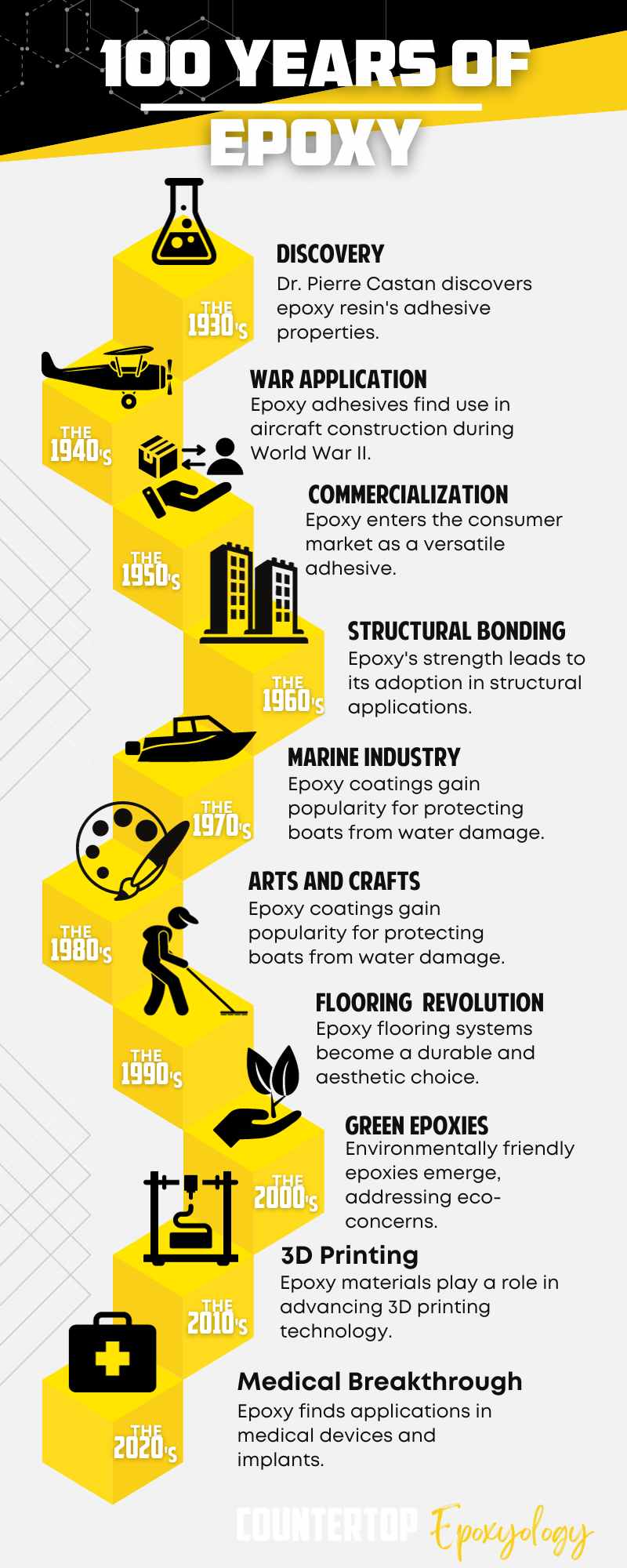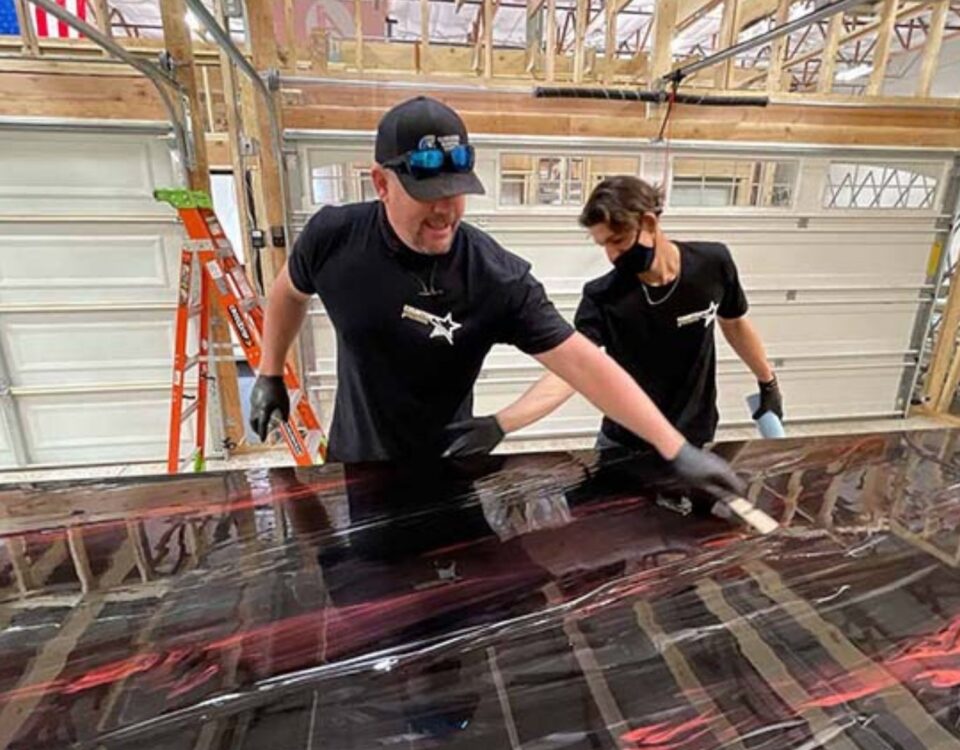
Maintenance 101: Keeping Your Epoxy Countertops in Pristine Condition
September 5, 2023
The Secret to Stylish Success: Epoxy Countertops Elevate Commercial Environments
September 19, 2023
Epoxy, a versatile and resilient material, has become an integral part of our modern world. From adhesives to coatings, it finds applications in various industries, from construction to aerospace. But how did this remarkable substance come into existence, and what is its history? In this blog, we will explore the fascinating journey of epoxy from its humble beginnings to its widespread use today, and how it relates to modern trends like epoxy countertops, countertop refinishing, and epoxy floors in the kitchen theme.
The 1900s and Beyond: A Material of the Future
As epoxy technology continued to advance, its applications expanded into the marine industry, where it became a go-to material for building strong, lightweight boats. Epoxy's resistance to water and marine environments made it an ideal choice for boat builders.
The 1990s witnessed the growth of the composite industry, with epoxy composites playing a pivotal role in the production of high-performance materials for aerospace, sports equipment, and automotive components. The lightweight and strong nature of epoxy composites allowed for improved fuel efficiency and performance.
Today, epoxy has become indispensable in various fields, including construction, aerospace, automotive, electronics, and art. Its evolution over the decades has led to the development of epoxy-based adhesives, coatings, and composites that cater to specific industry needs.
The history of epoxy is a testament to human ingenuity and innovation. From its modest beginnings as a wartime adhesive to its current status as a versatile and resilient material, epoxy has played a crucial role in shaping our modern world. Its remarkable properties have enabled advancements in numerous industries, from construction to art, and continue to drive progress in technology and manufacturing. As we look to the future, epoxy's enduring legacy promises to endure, bonding us to new horizons of possibility, including exciting trends like epoxy countertops, countertop refinishing, and epoxy floors in the kitchen theme.



